For many RVers, backing in can feel like threading a needle with a moving house. Tight turns, hidden obstacles, and that little voice in your head saying don’t hit anything can make the process stressful.
The good news is there are proven ways to make it smoother, safer, and a whole lot less nerve-wracking.
Here’s how to set yourself up for success from the moment you enter the campground to the final inch of your parking job.
Before You Arrive
1. Practice in an Open Space Before Your Trip
If you’ve never backed up a trailer before, or haven’t done it in a while, practice makes a difference. Find a wide, empty parking lot and set up markers to simulate a campsite. Use cones or buckets to stand in for trees or post corners. Practice backing in from different angles until you’re comfortable making small steering corrections without overreacting. Even 30 minutes of practice can make your first real-world attempt far less stressful.
Choosing and Approaching the Site
2. Walk the Site Before Parking
Before you back in, get out and take a look around. Check for things like fire pits, tree stumps, water hookups, uneven ground, etc. Even a picnic table placed a foot too far into the site can throw off your approach. Walking the site also gives you a better sense of spacing than you’ll get from the driver’s seat. If something can be moved, move it now. If it can’t, make a mental note so you can plan your turn.
3. Be Mindful of Height and Overhangs
When you’re parking a large RV, clearance above your rig can be just as limiting as the space around it. Roof-mounted items like air conditioners, vents, and satellite dishes sit higher than the main body and can be damaged by branches, overhangs, or power lines. Take a moment to scan above the site before pulling in.
4. Choose a Level, Obstruction-Free Site
If you have the option, pick a site that doesn’t add more work than necessary. A relatively flat pad with clear edges makes a big difference when backing in. Watch for steep drop-offs, sloped entries, or large roots or rocks where your wheels or jacks will land. Sites with fewer obstacles save time, reduce frustration, and lower your chances of damaging something.
5. Watch Parking Angles
For you absolute beginners, it’s important to note that many campgrounds angle their back-in sites to help you get in more easily, but only if you’re approaching from the right direction. If you come in from the wrong side of the loop, you’ll likely need to make a much sharper turn, and that can put the front of your tow vehicle or motorhome at risk of swinging too close to trees or posts. Take a minute before you approach to look at how the site is set up and line yourself up accordingly.
6. Keep Kids and Pets Inside During Parking
This isn’t just about safety, it’s also about focus. Kids and dogs tend to wander, and even a quick distraction at the wrong moment can lead to a bad outcome. Keeping them inside while you park keeps everyone safe and lets you and your spotter concentrate on the task at hand without having to divide your attention.
Getting into Position
7. Take Your Time
There’s no award for backing in fast. Slower movements give you more time to think, react, and make small corrections. You’re less likely to jackknife a trailer or clip an obstacle if you’re moving at walking speed. If things aren’t lining up, stop, pull forward, and try again. Most people in the campground would rather see you take your time than watch something get damaged.
8. Use a Spotter with Clear Communication
A good spotter can make the difference between a clean setup and a frustrating mess. Your spotter should stay visible in your mirrors or through your backup camera, and agree on simple hand signals or a phone on speaker (some even use walkie-talkies). If you lose sight of them, stop. Backing up blind, even for a few seconds, can be all it takes to hit something you didn’t know was there.
9. Use the Bottom-of-Wheel Trick for Trailers
If you’re towing a trailer, backing up can feel backwards. Here’s a trick that helps: put your hands on the bottom of the steering wheel. As you back up, move your hands in the direction you want the trailer to go. Want the trailer to go left? Move your hands left. This takes a lot of the confusion out of reversing and makes small adjustments easier to manage.
10. Use an S-Turn to Set Up Your Trailer Angle
Instead of pulling straight past your site and trying to cut the trailer in with a sharp turn, try a wide S-turn as you approach.

Turn slightly away from the site, then back toward it, which angles the trailer into the space ahead of time. This often lines you up better, especially in angled sites, and can make the rest of the backing process a lot smoother. You may lose a little swing room for your truck, but the benefit is a more natural path for the trailer.
11. Don’t Be Afraid to Pull Forward and Reset
No one gets it perfect every time. If your angle’s off or you’re getting too close to an obstacle, pull forward and try again. Even experienced RVers make multiple adjustments (I did it all the time). Backing in is a process, not a single move. Resetting is part of the job, not a sign you’re doing it wrong.
12. Use Markers or Cones
If you’re traveling solo or your spotter is new, it helps to drop some visual markers. A few small cones or even campground firewood can help you line up your tires or see how close you are to a post or tree. This can also help with depth perception when you’re using a backup camera alone.
Final Checks Before Setup
13. Plug In Before You Level
Before you drop the jacks or unhitch the trailer, test the power pedestal. Trust me, you don’t want to find out that your hookups are dead/faulty after you’ve fully set up. Plug in, check for power, and make sure the breakers are functioning. If there’s a problem, it’s much easier to change sites while everything is still mobile.
14. Confirm Slide and Awning Clearance Before Unhitching
Walk around your RV and check for anything that could interfere with a slide-out or awning. Low branches, utility posts, etc., can cause damage if you extend without looking. If space looks tight, extend the slide a few inches while still hitched and have someone outside watching. It’s easier to correct the trailer’s position now than after you’ve dropped it.
15. Watch Where Your Steps Will Land
Take a look at the ground beneath your entry door. If your steps are going to land in a hole, over a rock, or on a slope, getting in and out of your RV will be annoying at best and dangerous at worst. Adjust your final position to make sure your steps are safe and stable.
Do you have a parking tip that’s worked well for you? Let us know in the comments.
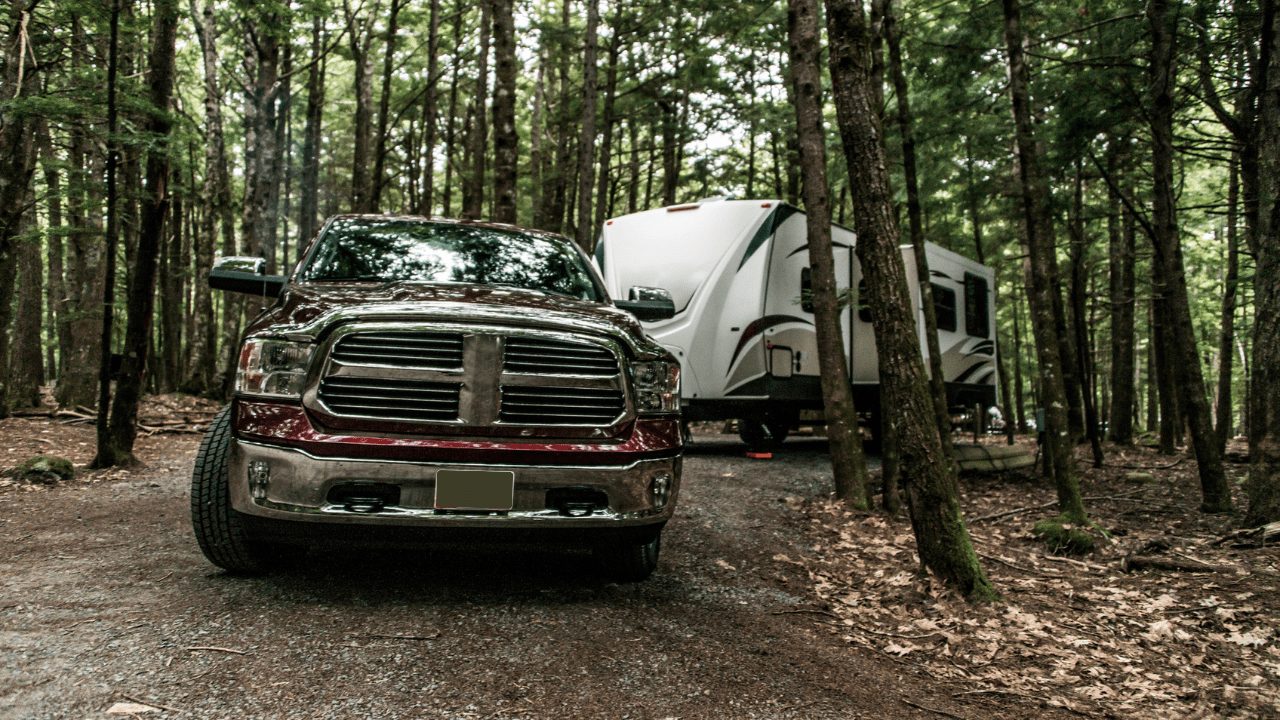
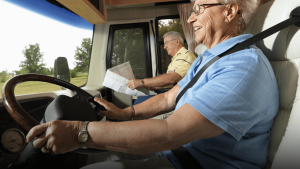
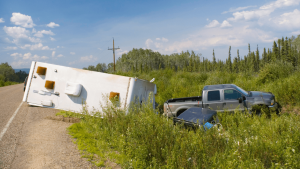

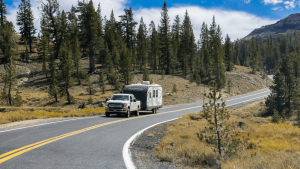
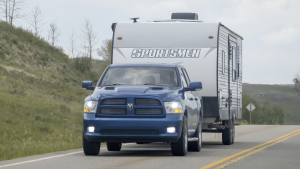
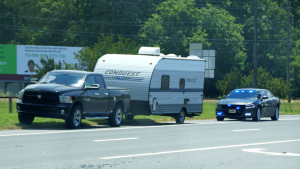
Old timer tip #1 wen setting up to back in always pull back of rig ten feet past site entrance. This will give it time to turn in.
tip #2 pull up on the same side as the site giving room for the tow vehicle to go wide as it follows the RV.